The Babcock peach is one of the most popular peach tree cultivars you can find.
It is highly recommended for regions with mild winters such as Southern California.
Although it has been nearly a century since its introduction, Babcock remains a favorite and sets the gold standard for white peaches.
Where Does the Babcock Peach Originate From?
Babcock has a long history, dating back to research done by Professor E. B. Babcock at the University of California in the early 1900s. After many years of development, it started to be promoted for commercial use around 1933.
At the time, orchards in Southern California struggled with peach production following mild winters. This was ultimately due to the fact that the existing varieties were not acclimated to local conditions and required high chill hours.
When this chill requirement was not met, the peach trees suffered prolonged dormancy and subsequently failed to set fruit properly.
This Babcock peach, a hybrid between Strawberry and Peento peach cultivars, directly addressed that concern.
This novel cultivar not only had a low chill requirement was also highly marketable on account of its taste and appearance.
The fruit combines sweetness with low acidity and develops an attractive red hue as it ripens. Its flesh is light colored and does not cling to the pit, which makes it a white free-stone variety.
What Are Recommended Grow Zones for a Babcock Peach Tree?
Babcock is recommended for USDA zones 8 – 10. In the United States, that includes most of the West Coast, the Southwest and Southern states.
As mentioned above, Babcock is considered a low-chill cultivar. Specifically, it requires only 250 – 300 chill hours during its dormant period.
How Big Does a Babcock Peach Tree Get?
Babcock peach trees come in many sizes.
Standard size Babcock trees can get about 25 ft tall and 25 ft wide at maturity. This makes it a medium sized fruit tree.
That said, as a home grower, you will likely want to prune it to keep it down to a more manageable size, under 15 ft.
Alternatively, you can also choose to buy a semi-dwarf or dwarf Babcock peach tree. A semi-dwarf peach tree should only get to about 12 to 15 ft tall while a dwarf should stay under 10 ft.
Here is an example of a so-called ultra-dwarf Babcock peach tree, which is said to grow only 5 to 8 ft tall.
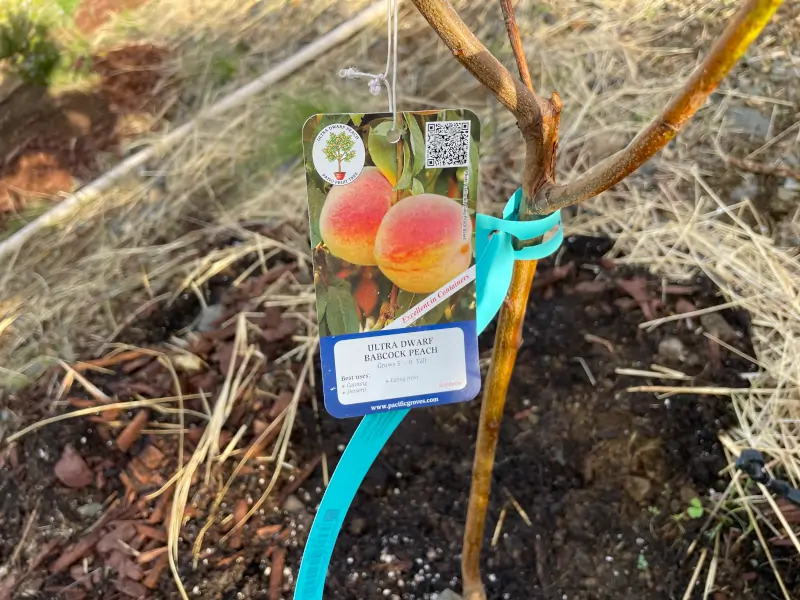
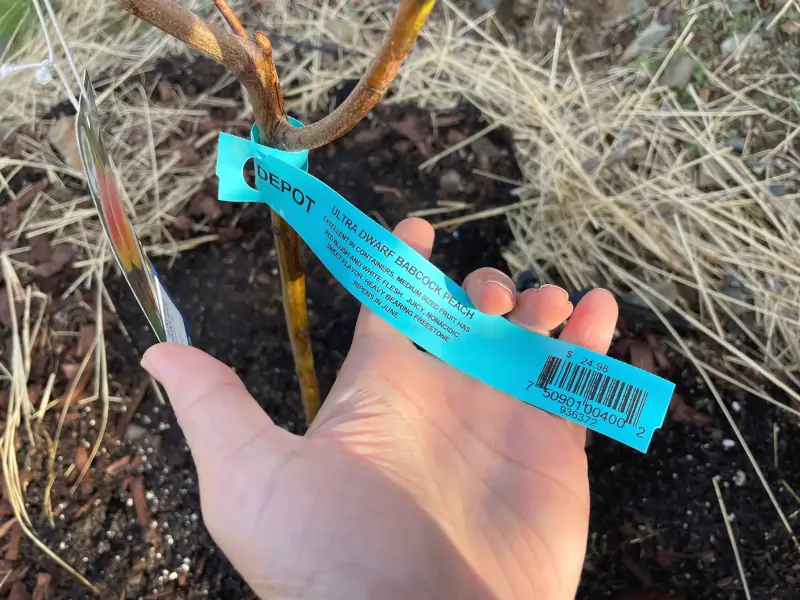
When Does a Babcock Peach Tree Start to Bloom?
Babcock peach trees are low chill and awaken from dormancy in early spring.
In California, you can typically expect them to start blooming in mid to late March.
The peach blossoms are a showy pink as you can see below.
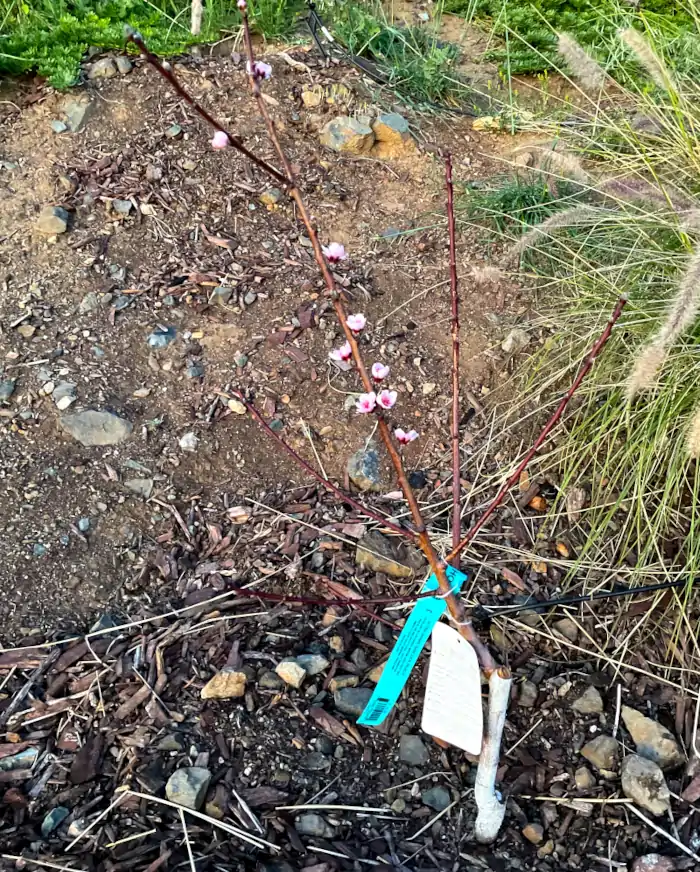
Are Babcock Peach Trees Self-Fertile / Self-Fruitful / Self-Pollinating?
Yes, Babcock peach trees are self-fertile in every sense of the word.
This means they do not require another type of peach tree nearby in order to bear fruit. A single tree is sufficient.
However, the tree will become even more productive when there is another variety to cross-pollinate.
When Can You Harvest Babcock Peaches?
Ripening times vary by location and environmental factors.
Babcock peaches are usually ready to be harvested between late June and mid-July.
The tree is naturally heavy bearing.
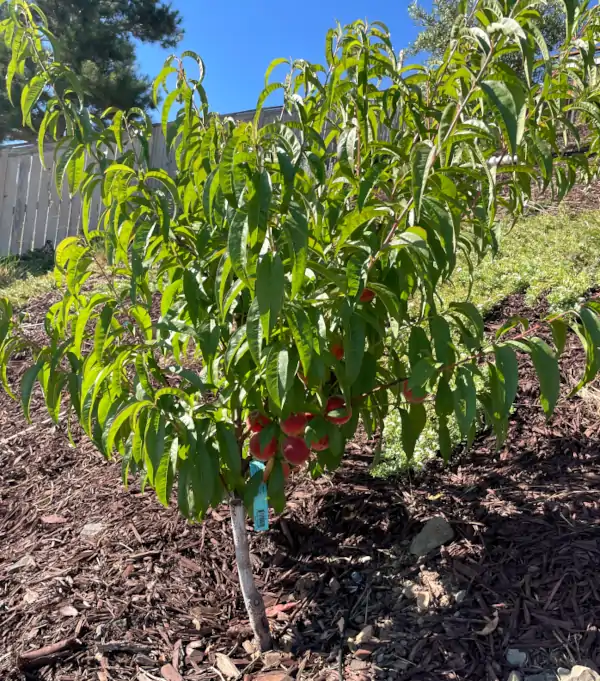
What Do Babcock Peaches Look and Taste Like?
Babcock peaches have a characteristic red blush, mostly on the side exposed to more sunlight.
The fruit is medium sized with a non-acidic and sweet taste. The flesh is light colored.
As a free-stone peach, Babcock can be eaten either fresh or canned.
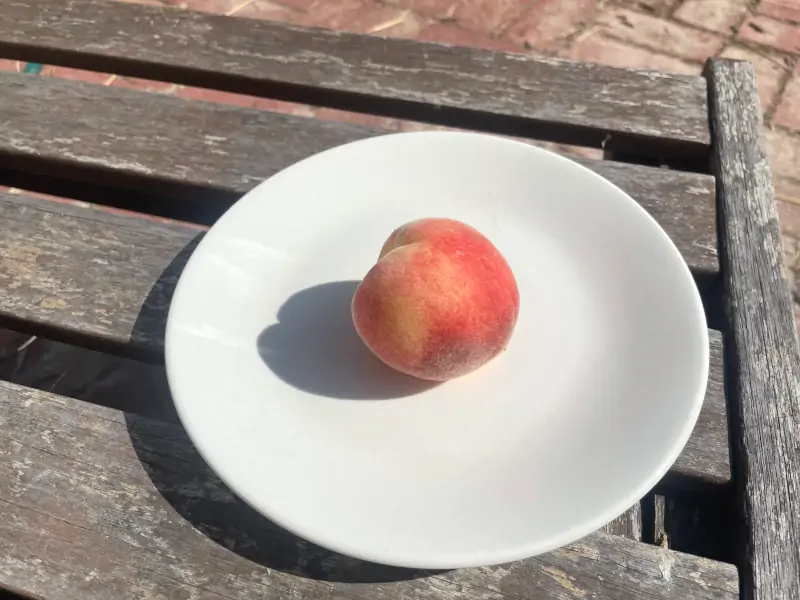
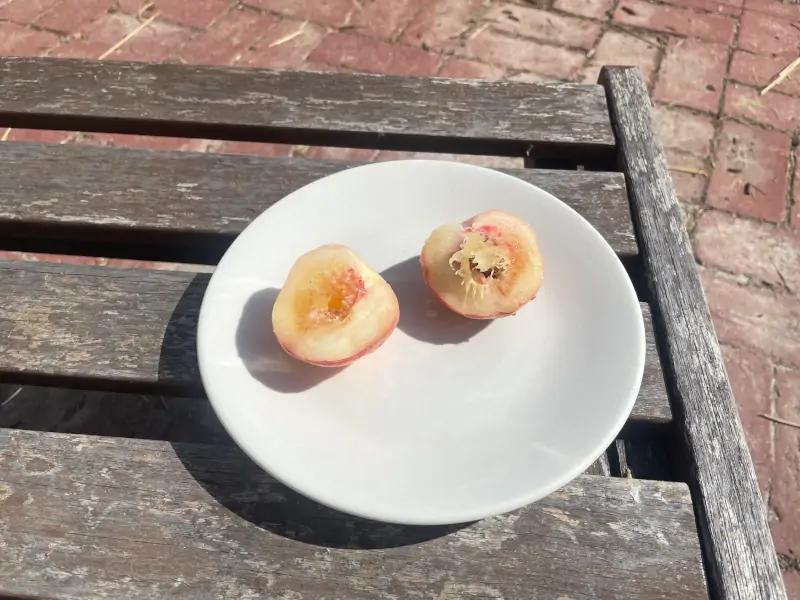
How Do I Plant a Babcock Peach Tree?
The planting method will depend on whether you bought the tree in a container or went for the bare root option.
For a container tree, you will want to dig a hole that is at least twice as deep and wide as the root ball. The planting instructions often mention that you should then mix amended soil together with native soil, but that’s usually not necessary unless your soil is extremely deficient in nutrients. You will also want to irrigate the planting hole before and after you plant the tree.
With a bare root tree, initial watering is even more important. In fact, it is recommended to set the bare root tree in a bucket of water for at least several hours before you plant it in the ground. You will still want to dig a wide planting hole to soften up the soil around the roots and allow them to expand. Be sure to spread out the roots as much as possible.
It is also recommended to cut back the branches of the bare root tree. This is because some of the roots were likely cut off when the tree was dug out from the ground and the remaining root structure may not support the same size tree as before. If you are buying from a nursery, their staff may offer to do the trim work for you right there.

How Do I Care for a Babcock Peach Tree?
Babcock peach trees are moderate in terms of their water consumption. They are by no means drought tolerant but neither are they as thirsty as many subtropical fruit trees such as citrus or avocado trees.
Young trees may need to be watered at least twice a week but once the tree is well established, you can reduce watering to weekly intervals.
Like any fruit tree, Babcock will also require regular use of fertilizers during the growing season.
Moreover, there are some characteristics that Babcock trees have in common with peach trees in general.
During the dormant season in winter, when the tree has dropped its leaves, you will want to prune the branches into a vase-like shape. This will help the tree stay smaller and also become more productive the next season.
It’s also worth pointing out that Babcock peach trees are susceptible to peach leaf curl, as most peach trees are. This is a fungal disease that will cause leaves to become deformed and drop prematurely in spring and summer, thus affecting productivity. To prevent this from happening, growers can apply an anti-fungal dormant spray before the blooming period.
Additionally, as the peach tree starts to develop fruit, you will need to thin some of it. This is quite common with peach trees in general as they tend to overproduce. Thinning involves removing some of the new fruit from the branches. If you are not familiar with this practice, it might sound alarming at first, but it has a couple of benefits and is also done with many other types of fruit trees. First of all, there is less risk of a tree branch breaking because it is carrying too much fruit. And secondly, the remaining fruit will likely grow larger, which is something most people appreciate.
Where Can I Buy a Babcock Peach Tree?
Babcock peach trees are widely available, not only at professional nurseries but usually also at Home Depot and Lowe’s garden centers.
If you are unable to find a tree in your area, you can call your local nursery and they may be able to special order one for you or give you more information as to when it will become available.
We recommend picking up a bare root fruit tree. The Babcock tree below was sold at Home Depot (as you can tell by the Vigoro label) and came packaged that way, with sawdust inside the bag covering the roots.
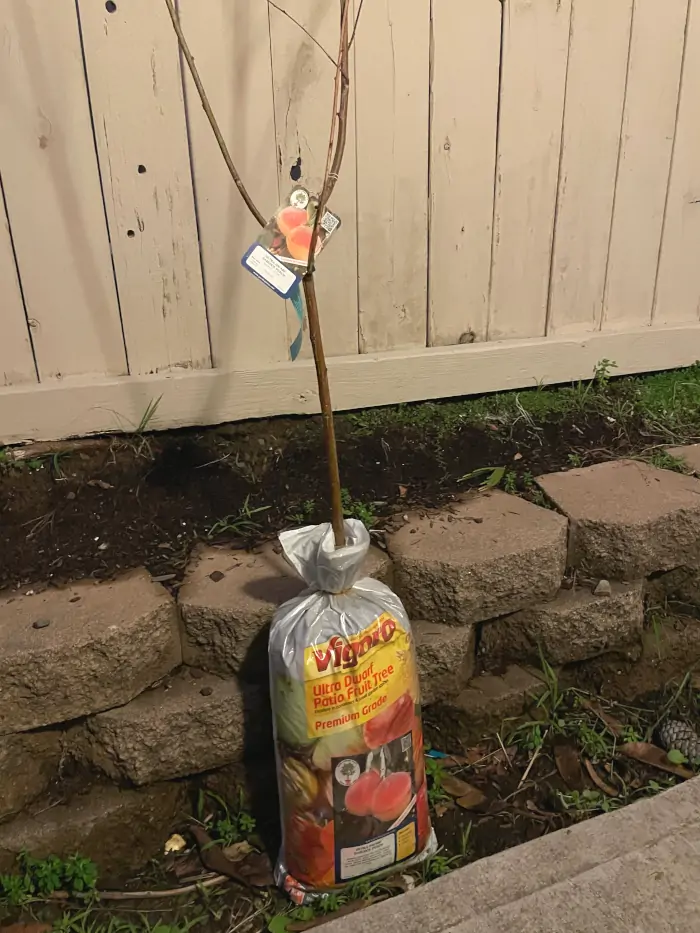
If a Babcock tree turns out to be unavailable at any local stores nearby, you may be able to find it online and have it shipped to you. While there are many reputable merchants, you will still need to take some precautions to make sure you are ordering a suitable specimen.
For a comparison of big box stores vs nurseries vs online merchants, please review this previous article.

![You are currently viewing Babcock Peach – Profile and Review [Photos]](https://orchardculture.com/wp-content/uploads/2023/08/peach-tree-branch-2.webp)

![Read more about the article Anna Apple – Profile and Review [Photos]](https://orchardculture.com/wp-content/uploads/2023/08/anna-apple-branch-300x234.webp)
